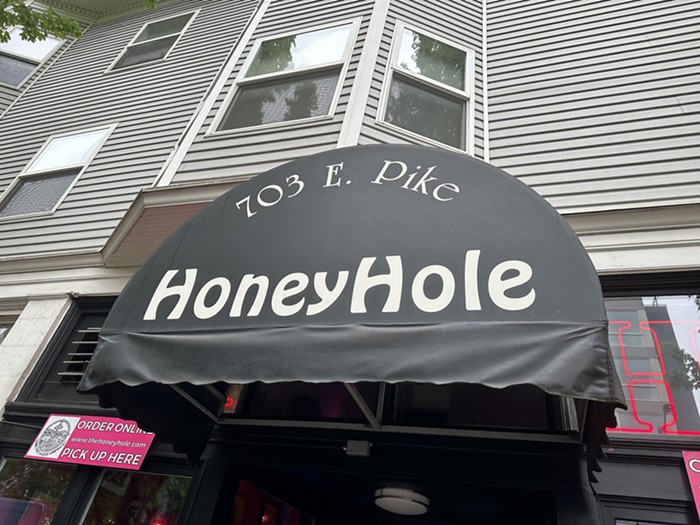
Something beautiful happens every September in Seattle’s breweries and bars: suddenly people care about Centennial. Drinkers usually don't even notice Centennial because this 20-year-old American hop varietal is one of the most widely used hops in American craft beer. If the world is divided between sexy hops and unsexy hops (and it is) then Centennial would be decidedly unsexy.
The sexier hops—varietals like nelson sauvin or citra or sabro—can get beer nerds to wait in line and pay $20 for a 4-pack of hazy IPA. Yet last week, I saw lines of people waiting at three different breweries for beers, specifically because they were made with centennial.
What causes this seasonal shift in the beer consciousness? The fresh-hop beer season can be blamed. Centennial is the first commercial hops variety that ripens every year and since fresh hop beers cannot be made until the hops are ready to be picked, the first fresh hop beers released every year tend to be made with Centennial.

These hyper-seasonal beers are the only type of beer where fresh, undried hops are used in brewing. The vast majority of beer is made with hops that have been dried. But during our harvest season, hops are rushed to local breweries and are thrown into boiling kettles within 24 hours of being picked from their bines (not vines). These damp, uncured hops have different qualities than their dried counterparts. Part of the fun of fresh hop beers is that they reimagine what hoppy beer can taste like. They taste more like fresh herbs, like an overall green flavor, and surprising new flavors can be showcased.
Take for instance Cloudburst Brewing’s A$ap Hoppy, the downtown brewery's annual first wet hop release of the season. Every year’s A$ap is slightly different but it always has a distinct watermelon flavor, something most people don’t associate with Centennial hops let alone beer in general. This year’s tasted like fresh watermelon and cherry, or like pungently overripe melons wrapped in a soft green flavor.
Stoup Brewing’s Centennial Fresh Hop beer was full of that “green” fresh flavor with a touch of earthiness. While Cloudburst's A$ap was full of fruit flavor, Stoup’s fresh hop only had a touch of lemon and fruit flavor.
I went back to Cloudburst for their second fresh hop, a double IPA named Green Means Go, also made with Centennial fresh hops, and it showed yet another side of this classic hop. It had those green flavors in its nose and body but overall the beer was dominated by a soft, almost sweet quality. There was hardly anything bitter about it. Green Means Go had a soothing and easy-to-drink quality, despite it being nearly eight percent alcohol.
Centennial, named after Washington’s 100th anniversary, is both part of our local farming tradition and a piece of international beer history. So it’s refreshing to see beer drinkers (somewhat accidentally) celebrate Centennial every year. Brad Carpenter, whose family has been in the Yakima Valley hop farming business since the 1860s, told me that brewers use Centennial hops in their first fresh hop beers because that’s the hop that’s ready earliest.
“Centennial is the first variety of major commercial acreage to be harvested each year, as it typically matures in late August to early September,” Carpenter said. “As brewers are wanting to get a jump on the fresh season, centennial is typically the go to variety to begin with.”


The hops harvest runs the entire month of September and new varietals are now being picked and showing up in fresh hop beers. Cloudburst Brewing already has beers made with wet strata and wet cascade hops on tap, so Centennial’s seasonal allure is already fading.
I think Centennial should always be appreciated. This hop, which was first released in 1990, is one of the earliest examples of American hops bred for their unique citrusy and fruity aromas. These unique flavors were once considered an off flavor, something to be avoided in beer. But then brewers on the American west coast invented the American Pale Ale, a style that leans into these aromas instead of avoiding them. Centennial was bred to bring out even more of these pungent flavors and 20 years after it was released, these flavors are now the biggest beer trend in the world, with American-style hoppy pale ales dominating markets around the globe.
Seattle’s drinkers have been tasting these flavors for decades, but it’s a good thing we get reminded every fall to respect where this trend started.













